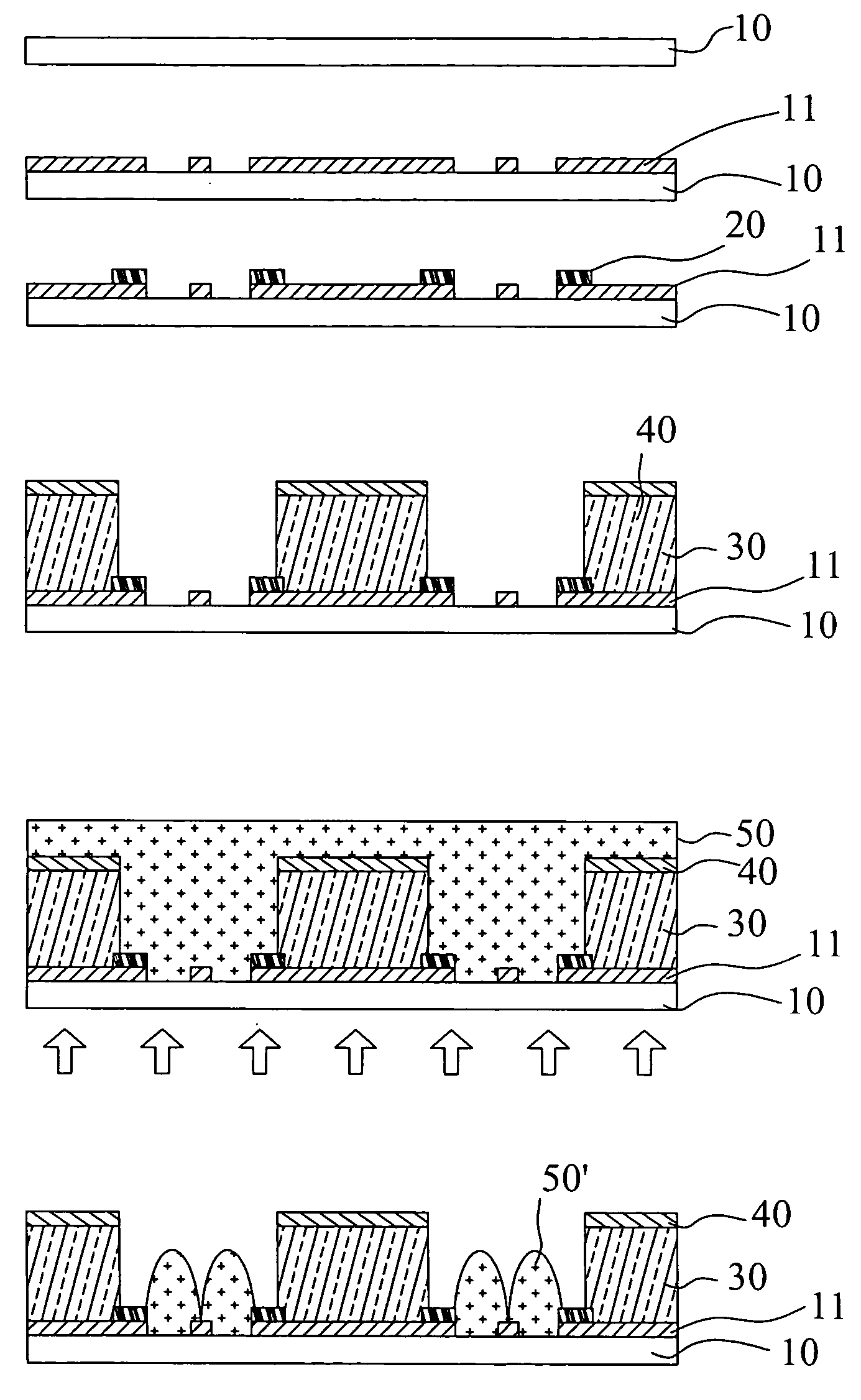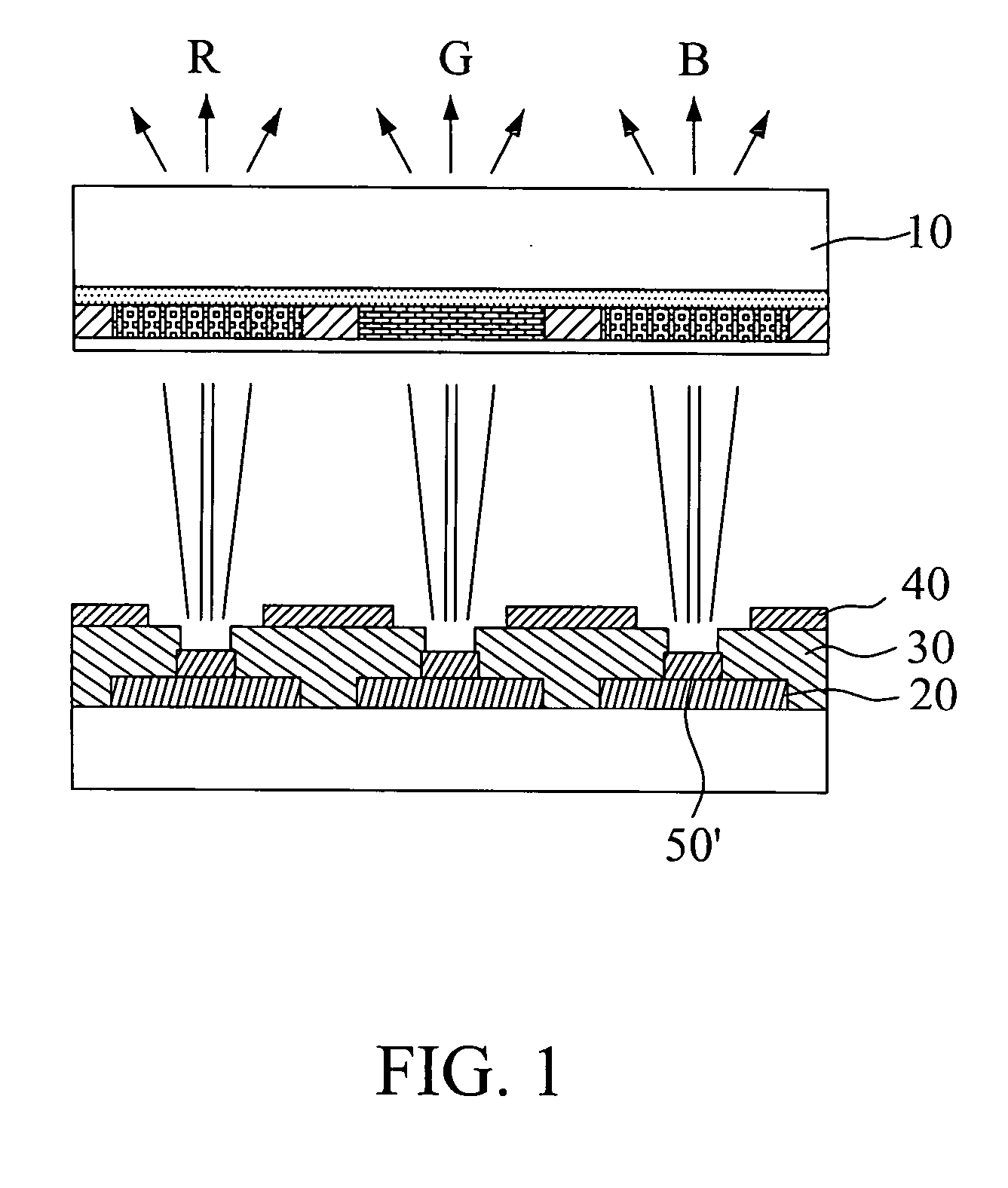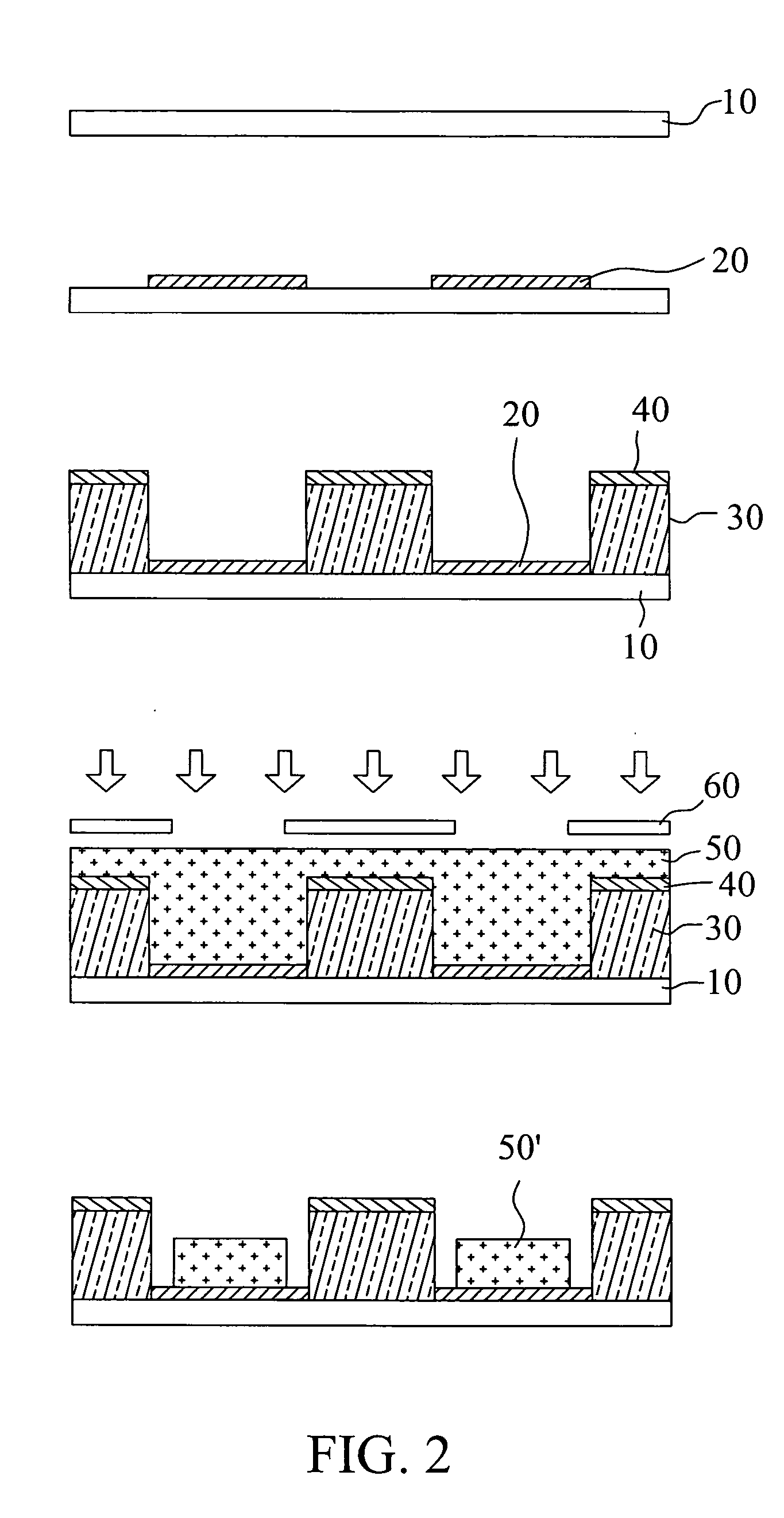Carbon nanotube field emitter array and method for fabricating the same
a carbon nanotube and emitter array technology, applied in the manufacture of electric discharge tubes/lamps, discharge tubes luminescnet screens, tubes with screens, etc., can solve the problems of easy short circuit, easy asymmetry of photolithography process, and limited size of cnt emitters formed by the aforesaid method, etc., to achieve easy adsorption of carbon nanotube field emitters, less photomasks, and low fabrication costs
- Summary
- Abstract
- Description
- Claims
- Application Information
AI Technical Summary
Benefits of technology
Problems solved by technology
Method used
Image
Examples
embodiment 1
[0026] With reference to FIG. 3, a transparent or semi-transparent substrate 10 is provided, and then a thick silver layer is deposited on the substrate 10 by a thick film process and patterned to form a cathode layer 20 having a first pattern. Next, an opaque insulating layer 30 having a second pattern is formed on the substrate 10, wherein a predetermined part of the cathode layer 20 is exposed. Afterwards, a gate layer 40 having the second pattern likewise is formed on the opaque insulating layer 30. A carbon nanotube layer 50 is then coated on the entire top surface of the substrate 10. Finally, the carbon nanotube layer 50 is exposed to a light beam coming from the backside of the substrate 10 and results in a carbon nanotube field emitter 50′. Owing to the properties of the carbon nanotube layer, the carbon nanotube field emitter 50′ is mushroom in cross-sectional view, and circular in top view, as shown in FIG. 6.
embodiment 2
[0027] With reference to FIG. 4, a transparent or semi-transparent substrate 10 is provided, and then a thick silver layer is deposited on the substrate 10 by the thick film process and patterned to form a cathode layer 20 having a first pattern. Next, an opaque insulating layer 30 having a second pattern is formed on the substrate 10, wherein a predetermined part of the cathode layer 20 is exposed. Afterwards, a gate layer 40 having the second pattern likewise is formed on the opaque insulating layer 30. A carbon nanotube layer 50 is then coated on the entire top surface of the substrate 10. Finally, the carbon nanotube layer 50 is exposed to a light beam coming from the backside of the substrate 10 and results in a carbon nanotube field emitter 50′. Owing to the slight transparency of the silver cathode layer 20, a plurality of irregular carbon nanotube field emitters 50′ is obtained after the exposure treatment, as shown in FIG. 7.
embodiment 3
[0028] The photomask is integrated into the triode structure of the carbon nanotube field emitter array in the present embodiment, and a four-layer structure is thus formed. With reference to FIG. 5, a transparent or semi-transparent substrate 10 is provided, and then an opaque layer 11 is deposited on the substrate 10. The opaque layer 11 is patterned to form the transparent holes in a volcano shape or a donut shape. Afterwards, a silver layer is deposited and patterned to form a cathode layer 20 having a first pattern. Next, an opaque insulating layer 30 having a second pattern is formed on the substrate 10, wherein a predetermined part of the cathode layer 20 is exposed, and then a gate layer 40 having the second pattern likewise is formed on the opaque insulating layer 30. A carbon nanotube layer 50 is then coated on the entire top surface of the substrate 10. Finally, the carbon nanotube layer 50 is exposed to a light beam coming from the backside of the substrate 10 and a carb...
PUM
| Property | Measurement | Unit |
|---|---|---|
| transparent | aaaaa | aaaaa |
| semi-transparent | aaaaa | aaaaa |
| structure | aaaaa | aaaaa |
Abstract
Description
Claims
Application Information
 Login to View More
Login to View More - R&D
- Intellectual Property
- Life Sciences
- Materials
- Tech Scout
- Unparalleled Data Quality
- Higher Quality Content
- 60% Fewer Hallucinations
Browse by: Latest US Patents, China's latest patents, Technical Efficacy Thesaurus, Application Domain, Technology Topic, Popular Technical Reports.
© 2025 PatSnap. All rights reserved.Legal|Privacy policy|Modern Slavery Act Transparency Statement|Sitemap|About US| Contact US: help@patsnap.com



